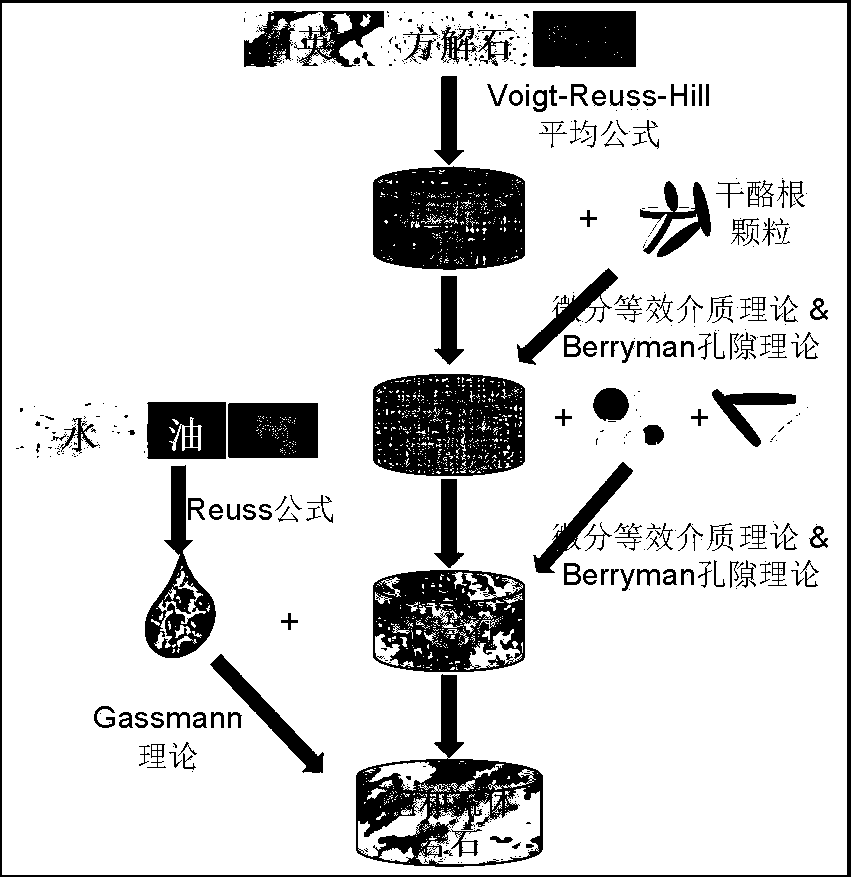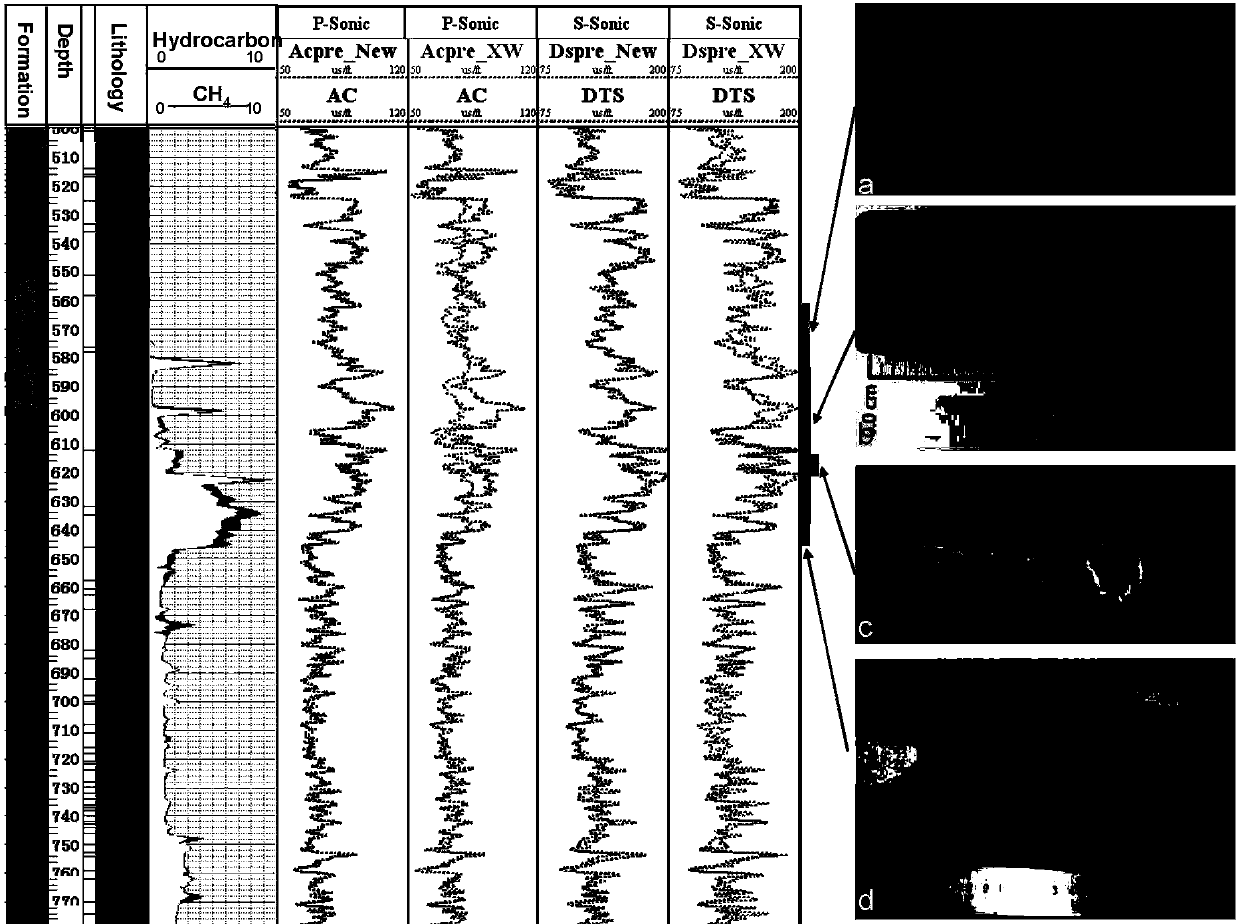Shale gas reservoir crustal stress logging prediction method based on rock physics model
A petrophysical model and prediction method technology, applied in seismology for logging records, etc., can solve problems such as not considering kerogen, not suitable for shale gas reservoirs, etc., and achieve the effect of improving accuracy
- Summary
- Abstract
- Description
- Claims
- Application Information
AI Technical Summary
Problems solved by technology
Method used
Image
Examples
specific Embodiment approach
[0024] Such as figure 1 Shown is the flow chart of the method for predicting in-situ stress logging in shale gas reservoirs based on petrophysical models. First, the mineral volume, porosity, saturation, and kerogen volume in the formation are obtained through logging interpretation; and obtained through rendezvous analysis The elastic modulus and density of the main minerals. The elastic modulus and density of the fluid are obtained through literature research. The elastic parameters here specifically refer to the bulk modulus and shear modulus; the logging interpretation results are introduced into the newly established shale gas reservoir The petrophysical model, by adjusting the pore type distribution spectrum parameters in the petrophysical model, iteratively calculates the longitudinal wave velocity and the shear wave velocity. Use the predicted longitudinal and transverse wave velocities to calculate the dynamic Young's modulus and Poisson's ratio, and convert the dynamic...
PUM
 Login to View More
Login to View More Abstract
Description
Claims
Application Information
 Login to View More
Login to View More - R&D
- Intellectual Property
- Life Sciences
- Materials
- Tech Scout
- Unparalleled Data Quality
- Higher Quality Content
- 60% Fewer Hallucinations
Browse by: Latest US Patents, China's latest patents, Technical Efficacy Thesaurus, Application Domain, Technology Topic, Popular Technical Reports.
© 2025 PatSnap. All rights reserved.Legal|Privacy policy|Modern Slavery Act Transparency Statement|Sitemap|About US| Contact US: help@patsnap.com



